About Cambodia and the Khmer Rouge regime
(lesson – the passive voice – H level)
Cambodia is surrounded by four countries on three sides– Vietnam on the east, Thailand on the north west, and Laos directly north. The Gulf of Thailand borders south of Cambodia.
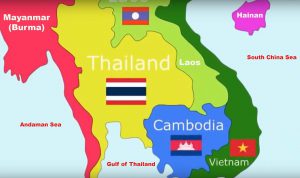
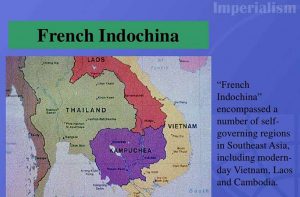
French Indochina composed of Cambodia, Laos and Vietnam. The French imposed their influencer for 78 years from 1863 – 1941.
Its original name was Kambuja. Cambodia was ruled by Khmer in 600 but was later invaded by the Thai and Vietnamese. In 1863 France joined Cambodia, Laos and Vietnam were colonized by the French who created a French Indochina to protect them from other foreign countries.
Indochina was ruled by the French from 1885 until 1941 for 56 years, and later they passed powers to Norodom Sihanouk in 1941. The French influence endured until 1945. Indochina was one of France’s most lucrative colonial possessions. It was established by the French to introduce modern political ideas, industrial methods and social reforms to the impoverished countries of Laos, Cambodia and Vietnam. Their real intent was their growing demand for raw materials, resources and cheap labour. Norodom Sihanouk was born to the Khmer Royal Family in theFrench Protectorate of Cambodia. Sihanouk became king in 1941 and remained in power despite the Japanese occupation of Cambodia during World War II. In 1945 after World War II it became independent of France. During the Vietnam War eastern Cambodia was used by Vietnam to protect its Vietcong troops and supplies from the U.S. As a result Cambodia was bombed by the U.S. to flush out the Vietcong, and Cambodia got involved with the U.S. in the Vietnam War.
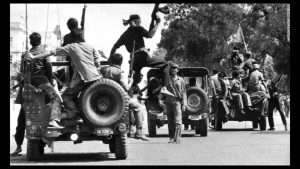
Soldiers of Khmer Rouge ravaged the country.

Nearly 2 million Cambodians died during the Khmer Rouge regime ruled by Pol Pot.
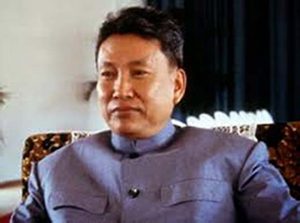
Pol Pot was merciless and brutal dictator of Cambodia. He died on April 17, 1998 before he could be tried by the United Nations tribunal.
In 1975, Cambodia was taken over by the Khmer Rouge regime when the Lon Noi regime was overthrown by Pol Pot, leader of the Khmer Rouge. For four years Cambodia was brutalized by the Pol Pot and his cronies of the Khmer rougeby killing close to 2 million people who opposed his government. Pol Pot ordered the killing of people in the “the killing fields.” Forced labor was imposed on the Cambodians many of whom worked to death in these labor camps. Cambodia was converted (by Pol Pot) into a Marxist agrarian society which led to the extermination of the country’s professional and technical classes. From 1975 – 1979 Pol Pot wiped out a large fraction of Cambodia’s people and left the rest with a country submerged in violence and pain. The philosophy of Pol Pot and his cohorts was one part Maoism and three parts paranoia. It emptied the cities and marched Cambodians to the country side to starve on state farms. Having an education, or even wearing glasses, could get one killed as a class enemy. Pol Pot was ousted by the Vietnamese forces on January 8, 1979. The Khmer Rouge officials and commanders including Pol Pot were tried by the United Nations tribunal for war crimes, crimes against humanity, homicide, torture, genocide and religious persecution l from 2007 – 2010. Unfortunately, Pol Pot died on April 17, 1998 before he could be tried for war crimes. His ranking officers were sent (by the United Nations tribunal) to prison for life.
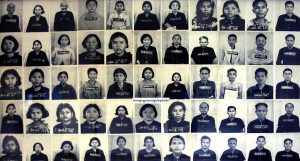
Pictures of young kids whose lives were ended by the genocide of the Khmer Rouge regime of Pol Pot.
To this day Cambodians are still affected by the Khmer Rouge regime, and some people are still suffering from PTSD (post traumatic stress disorder) due to the brutal nature of Pol Pot’s regime. Many have been affected by the loss of a close relative during the Khmer Rouge regime. Others are psychologically scarred by the memories of the brutality, criminal acts, and atrocities of Pol Pot and his cronies of the Khmer Rouge regime. Perhaps that is why the country and its people have not progressed well economically and politically after the defeat of Khmer Rouge military. To this day there are still political struggles occurring in the government. Cambodia’s economy remains heavily dependent on tourism and the apparel industry. Thus, many Cambodians are impoverished by its stagnant economy and their reliance on farming as a sole industry. More than half of the labor force is engaged in subsistence farming, and Cambodia remains one of Asia’s poorest countries.
A. Answer the following questions based on the reading.
B. Grammar – The passive voice.
- In English a verb can be active or passive. In the active voice, the subject of sentence performs the action. In the passive voice the subject receives the action.
Example: On June 29, 2007 Apple released the first iPhone.(active)
The subject “Apple” performs the action. The object “iPhone” receives the action.
The first iPhone was released (by Apple) on June 29, 2007. (passive)
The subject “iPhone” is acted upon by an agent which is “Apple.”
2. When we use an active verb, we say what the subject does:
Example 1 : My grandfather was an architect. He designed the Manhattan building in New York.
Example 2: Apple is a big company. It hires thousands of people in the U.S.
3. When we use a passive verb, we way what happens to the subject:
Example 1: This phone is pretty old. It was made in 1925.
Example 2: Thousands of people are employed by Apple.
4. When we use the passive, who or what causes the action is often unknown or unimportant.
Example 1: Almost 2 million Cambodians were killed in the war. (Somebody killed 2 million Cambodians, but we don’t know who.)
Example 2: The battle is fought every day. (We don’t know who fights the battle.)
5. If we want to say who doe or what causes the action, we use by.
Example 1: 2 million Cambodians were killed by the Khmer Rouge regime.
Example 2: The Khmer Rouge was lead by Pol Pot.
6. The passive is formed with “BE (is/was, etc) + past participle (done, seen, written, made, etc.)
Example: (be) done / (be) made / (be) written / (be) built, etc.
7. Past participle for regular verbs is from by adding d or ed.
For irregular verbs, the past participle must be memorized. (look at the grammar reference section for a list)
Exercise on the passive voice
C. More practice on the passive voice.
